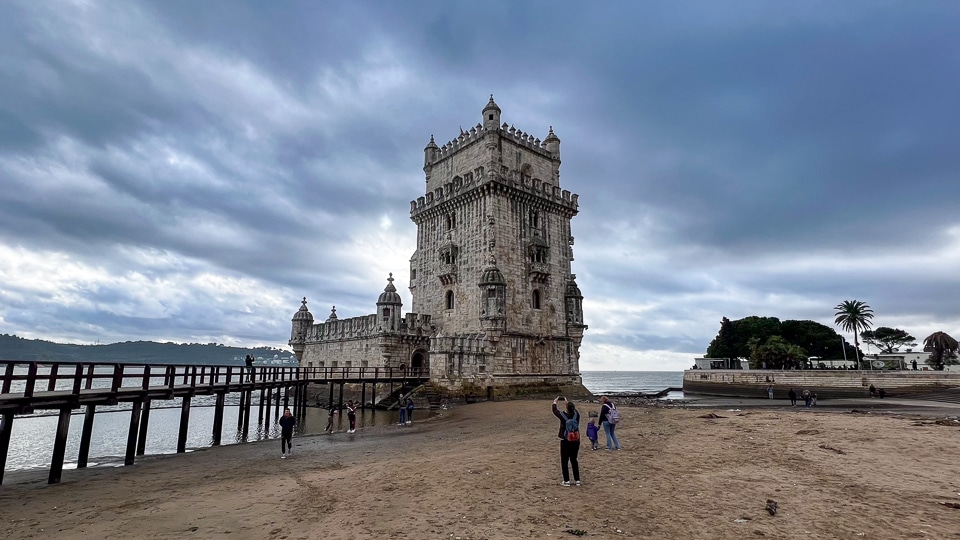
Portugal's vibrant capital of Lisbon features a rich history, delicious cuisine, and a lively arts and culture scene. Whether you're a history buff, a foodie, or just someone looking to soak in the local culture, the Portuguese capital has plenty of tourist attractions to keep you occupied and interested over a couple of days.
It's helpful to know a few bits of Lisbon's and Portugal's history before you go, all the better to understand what you are seeing. The dynasty of Portugal dates back to the 11th Century. After the centuries of success in the region and directing discoveries of the new world, Portugal and Spain were united under Felipe from 1580-1640. As Felipe favored Spain, Portugal was basically subjugated for those 60 years.
In 1755, a major earthquake struck Lisbon, and the city essentially burned to the ground. Good to keep that in mind as you walk about in the old city center.
Portugal gained its independence in 1910. But for 40 years, until 1974, it was under the strong dictatorship of Salazar. While it remained ostensibly neutral in WWII, the country experienced waves of emigration. Portugal joined the European Union in 1986.
Here are a few suggestions for a two day Lisbon itinerary.
Table of Contents
Torre de Belem and Jerónimos Monastery
Among the best places to start your cultural tour of Lisbon is in the Belém district along the Tagus River. Take a tram or metro train to the Jeronimos Monastery, and from there, within walking distance if you don't mind a bit of a hike, are the two UNESCO World Heritage sites of the Torre de Belém and the Jeronimos Monastery.
The Belem Tower (Torre de Belem) is a 16th-century fortification near the mouth of the Tagus River that served as a point of embarkation and disembarkation for Portuguese explorers of that time. It was built during the height of the Portuguese Renaissance, and, like the nearby monastery, is an example of the Portuguese Manueline –or Portuguese late Gothic – architectural style. The structure was built from limestone and is composed of a bastion and a four-story tower. You can pay an entry fee to walk across a short bridge and enter the tower, but honestly there is not much to see in the spare interior of the tower. While the exterior was designed as a showpiece, the interior is pretty much distinguished by bare functionality, with a few cannons thrown in for effect.
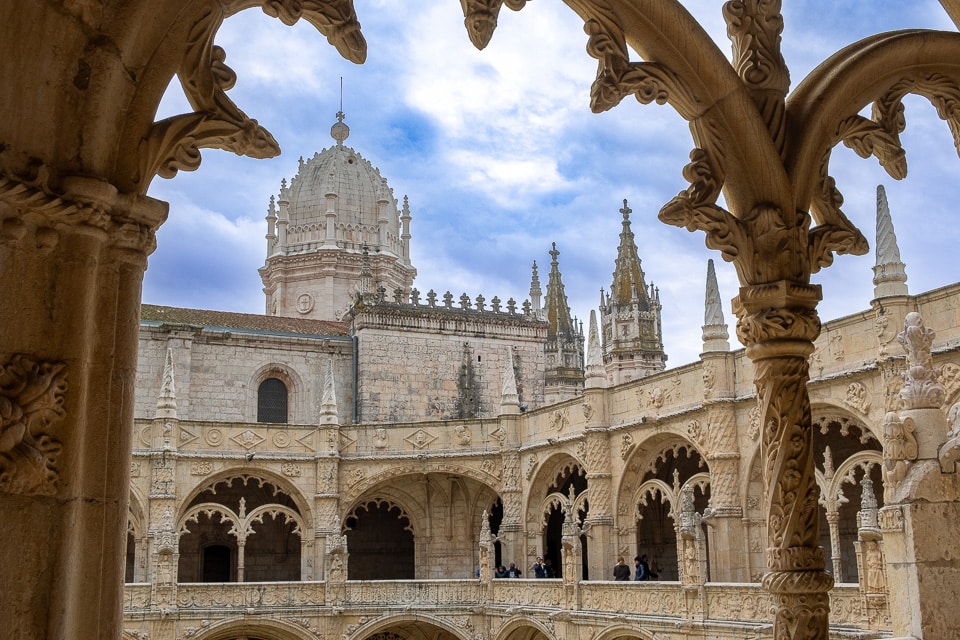
The Jerónimos Monastery across the road from the Belem Tower is contemporary to the tower and is also an example of the Manueline style in Lisbon. The Monastery was built in the early 1500s near the launch point of the explorer Vasco da Gama's first journey, and its construction was funded by a tax on the profits of the spice trade established by da Gama's establishment of the sea route around Africa to India. It's worth the visit, mostly to admire the intricate sculptural decoration and the tile work in the refectory.
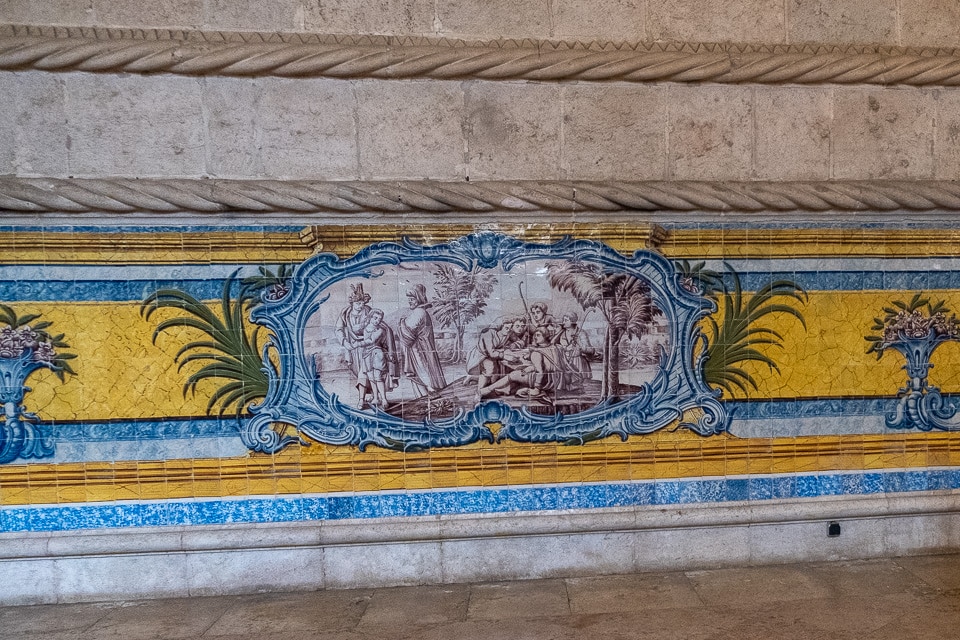
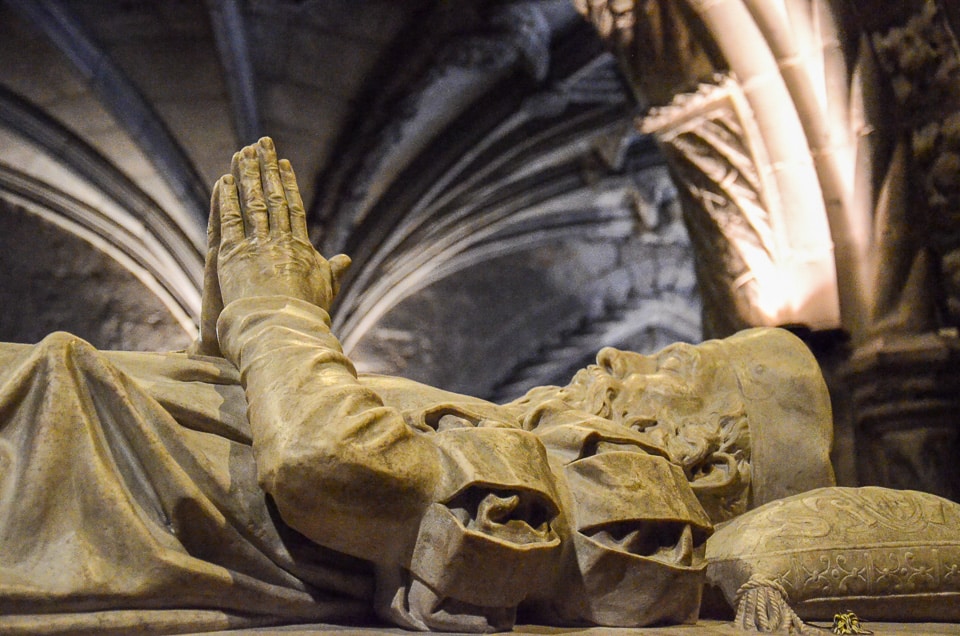
Also, the Monastery is a monument to the Portuguese explorers of the 16th Century, as the tomb of da Gama occupies a prominent place in the nave of the church.
While you're in the neighborhood of the Monastery, be sure to take a short walk to the east to the famous Pasteis de Belém Confeiteria where you can stand in line for a seat to enjoy your pastel with a cup of coffee, or you can simply walk up to the counter and grab a pastel for takeaway. Warning, the custard wrapped in flaky pastry is a bit messy, so consider doing as many Lisboners do, and shove it all into your mouth at once. Either way, you'll be licking your fingers for a while afterwards.
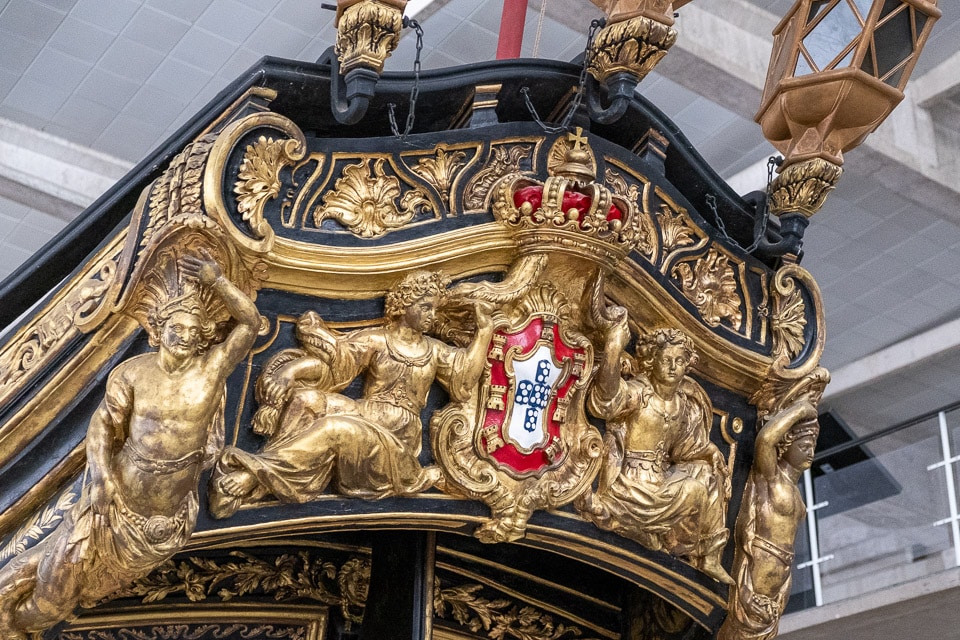
The Navy Museum
The Navy Museum (Museu de Marinha) occupies a part of the western wing of the Jerónimos Monastery with the National Museum of Archaeology, as well as a modern annex built to the north of the monastery.
The exhibits include historical paintings, archaeological items and many intricate scale models of ships used in Portugal since the 15th century. There's also a collection of navigational instruments from the past and present. There are plenty of maps, too. In the annex you'll see a collection royal barges, and the Portuguese Navy's first aircraft.
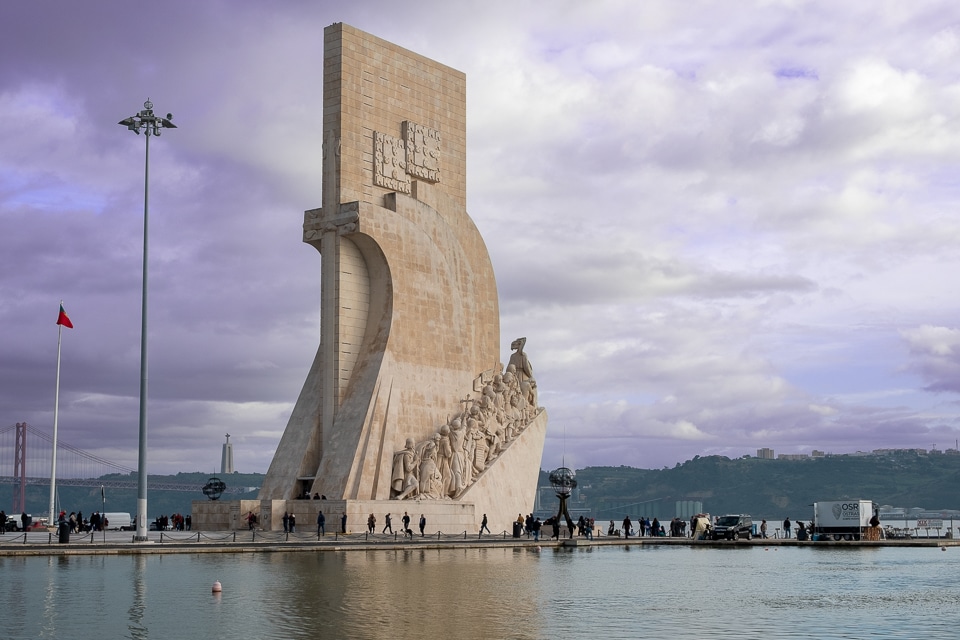
Monument of the Discoveries
Finally, as you make your way back to the center of the city, take some time to admire the enormous monument to Portugal's history of discoveries, the Monument of the Discoveries, which is just to the east of the Torre de Belem on the river bank.
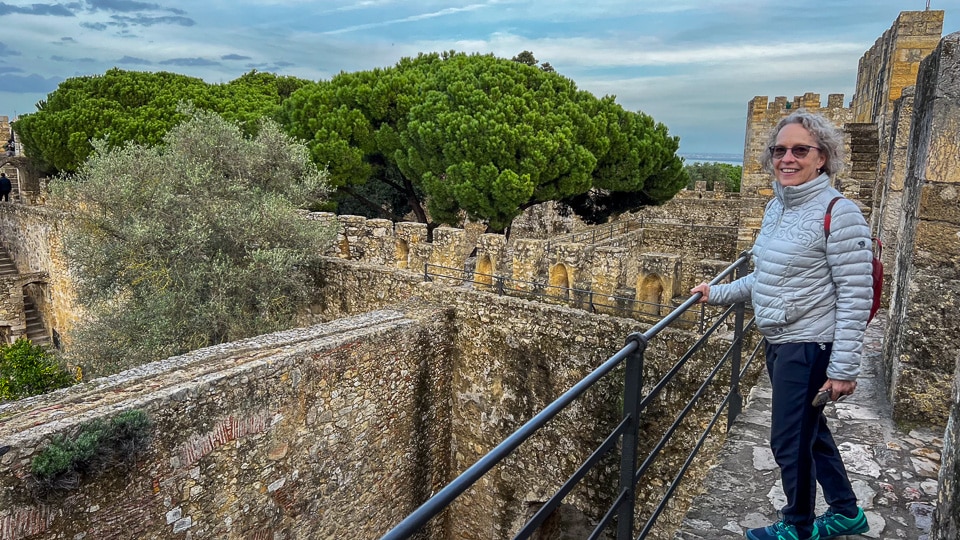
The São Jorge Castle
The Castelo de São Jorge is a historic castle located on a hill overlooking the current city of Lisbon. The castle hill has been occupied since at least the 8th century BC, while the oldest fortifications on the site date from the 2nd century BC. The hill on which Saint George's Castle stands has been the location of fortifications occupied successively by Phoenicians, Carthaginians, Romans, and Moors, before its conquest by the Portuguese in the 12th Century. Since the 12th Century, the castle has variously served as a royal palace, a military barracks, home of the National Archive, and now as a national monument and museum. You are welcome to clamber over the walls and battlements, and enjoy a nice view over Lisbon to the river and Atlantic Ocean while you're at it.
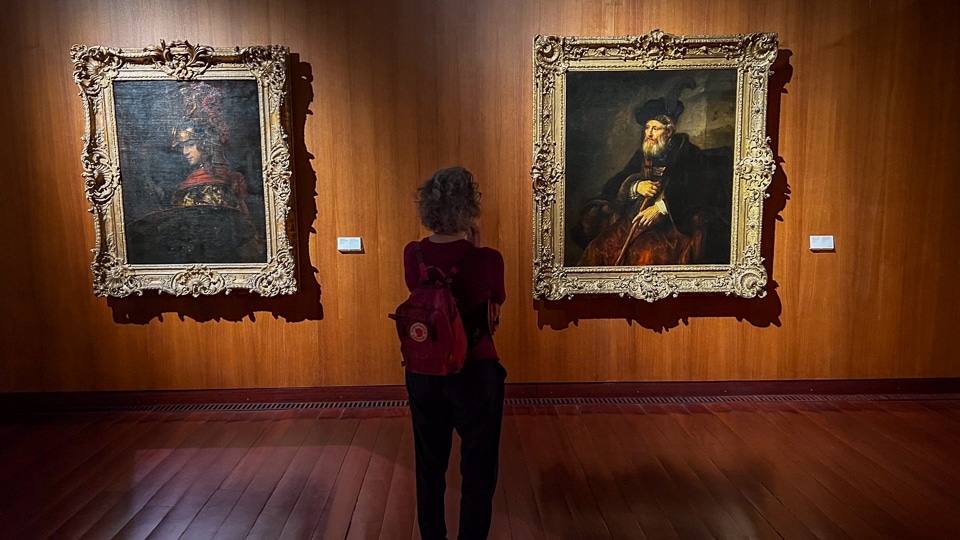
The Calouste Gulbenkium Museum
Our favorite surprise of our visit to Lisbon was the discovery of the Calouste Gulbenkium Museum, the collection of a wealthy Lisboner with eclectic and impeccable tastes. The collection, housed in a museum built next to his former home, includes everything from ancient Roman, Greek, and Egyptian sculptures, to Islamic, Japanese and Chinese ceramics, to Renaissance paintings by Reubens, Van Dyck, and Van der Weyden, to 19th Century paintings of such masters as Mary Cassat, Carot, Degas, Manet, Monet, and Turner. There are a couple of Rembrandts and an entire room dedicated to the French sculptural glass of René Lalique.
In all, a tour through the winding halls of the museum never ceases to surprise and amaze.
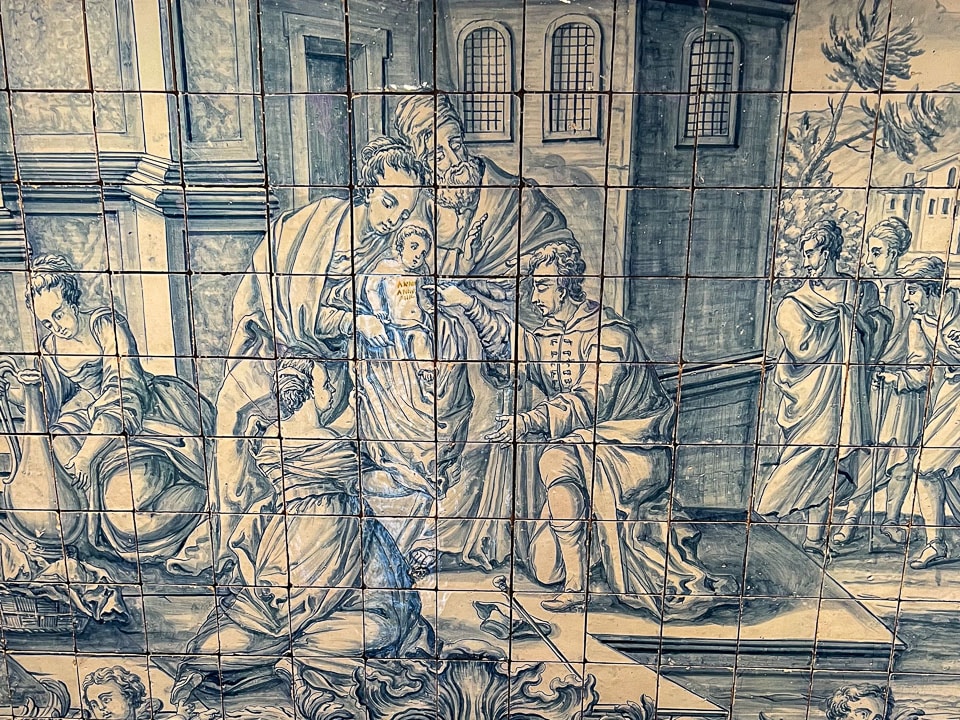
The National Tile Museum
The National Museum of Tiles, housed in the Madre de Deus Convent, includes work from 15th Century Moorish Spain and through changing techniques and styles right up to the present. It's easy to follow the chronological development from the earliest geometric patterns arranged in mosaic styles, to elaborate Christian scenes lining the walls of the chapel. Later, more whimsical patterns emerged to decorate everything from hunting lodges to kitchens. Some hands-on activities are available.
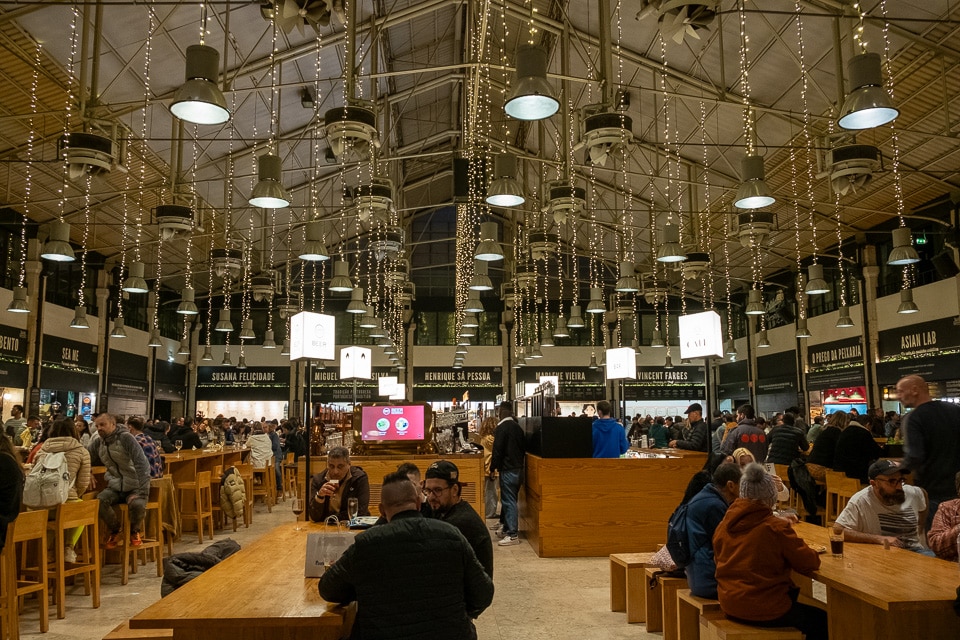
Where to eat and stay in Lisbon
Honestly, we loved the Time Out Market, which was recommended by our hotel concierge. There are more than 30 restaurants and kiosks in the loud and lively hall selling regional specialities, such as sheep's cheese and ham, custard tarts, shellfish and grilled fish, wines, beers, and chocolates. Several top Portuguese chefs have branches of their best restaurants here. The original fish, fruit and vegetable market stalls occupy the other half of the landmark building. We made more than a meal by visiting several kiosks for beers, a juicy hamburger, some grilled shrimp, and a delicious salad. The choices are close to infinite. Mix and match to your own taste.
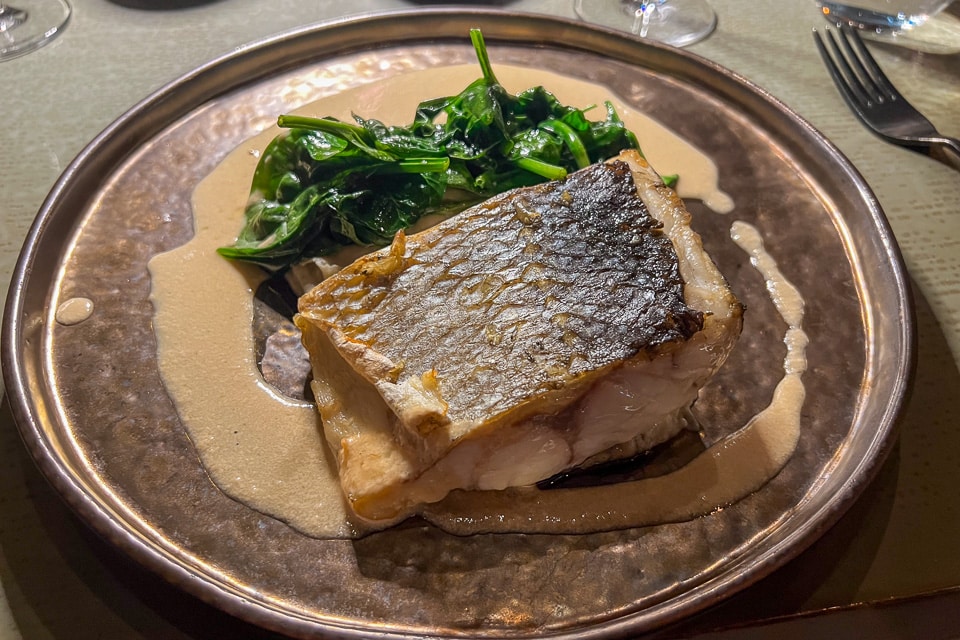
We stayed at the Corinthia Lisbon and were impressed by both the comfort and quality of the boutique hotel, especially its restaurants. The Erva Restaurant featured contemporary takes on traditional Portuguese cuisine – especially fresh seafood and gigantic steaks. The Soul Garden, with its Latin American and Asian fusion offerings, offered a wonderful small plates contrast to the more hearty fare of the Erva. Both were excellent.
For those who love to follow literary paths, check out the Pessoa Hotel, named for the famed Portuguese poet Fernando Pessoa. It's centrally located and complete with a library.
For your self-guided tasting pleasure, we recommend a walking food tour starting at Mercado Campo de Ourique. This full-on local market shopped by locals, in a less touristed area, sits on what was formerly fields, then a cemetery after the plague, then 18th Century army barracks, and eventually the seat of the Republic.
Stroll through this pleasant neighborhood (filling in with many international residents of late) to reach Teimar Cerveceria. This popular casual spot specializes in fish. We can recommend croquettes, mackerel, shrimp, and the Tiborna charcuterie plates. A small beer, called an “imperial” in Lisbon, is a perfect accompaniment.
Next you can cut through the Parque de Parada (or, Parade Garden) and see one of the largest Jacaranda trees ever, as well as families and young people relaxing in the shade. Your next stop might Cortesa (same group at Teimar) for some olives, bread, and delicious goat or sheets cheese. Then it's on to A Tentadora, a classic crowded joint for your final pastel de nata of the day, perhaps.
Interested readers might like to take a detour near here to visit the home of Fernando Pessoa, 20th Century poet and mysticist.

And of course you will have already checked out the Pasteis de Belém Confeiteria mentioned above. It's only fair to sample as many Pasteles de Nata as you can to be sure you like them.
Tradition also says you oughta try a Ginjinha drink, especially ordered from a tiny old open front Ginjinha bar. This cherry liqueur is often enjoyed with chocolate, but we prefer the straight stuff. Young and old will have a shot and carry on with their day, so we did likewise.
With More Time
We know Lisbon needs more than a couple days. Allow more time to visit Sintra, an easy day trip or a very fine overnight.
In Lisbon, other highlights we'd hasten to visit are the Carmo Convent Ruins and Museum and the Museum of Lisbon. The latter is actually in five parts spread across town, including the Roman Ruins (open only occasionally) under the streets of Lisbon.
Finally, across Lisbon are parks and public art, not to mention interesting streets to wander on your own. Art is everywhere.
We visited Lisbon this time as a precursor to our cruise with Viking River Cruises River of Gold Cruise of the Douro River.
Up Your Travel Skills
Looking to book your next trip? Use these resources that are tried and tested by us. First, to get our best travel tips, sign up for our email newsletter. Then, be sure to start your reading with our Resources Page where we highlight all the great travel companies and products that we trust. Travel Accessories: Check out our list of all the accessories we carry to make getting there and being there a lot easier. Credit Cards: See our detailed post on how to choose the right travel rewards credit card for you. Flights: Start finding the very best flight deals by subscribing to Thrifty Traveler. Book your Hotel: Find the best prices on hotels with Booking.com. See all of the gear and books we like in one place on our Amazon shop.Got a comment on this post? Join the conversation on Facebook, Instagram, or Threads and share your thoughts!

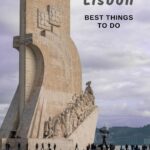


Comments are closed.